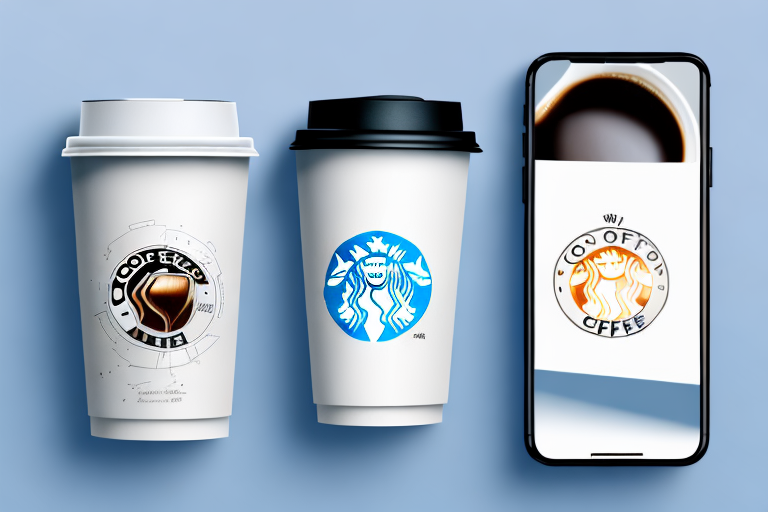Brand collaboration has emerged as an effective strategy for companies to enhance their market presence and drive growth. By joining forces with complementary brands, businesses can tap into new customer segments, explore innovative ideas, and expand their reach in the market. In this article, we will delve into the various aspects of brand collaboration and uncover the benefits that arise from such partnerships.
Understanding Brand Collaboration
Brand collaboration refers to the strategic alliance between two or more brands with the goal of creating a mutually beneficial outcome. It involves combining their resources, expertise, and influence to achieve shared objectives. By leveraging the strengths of each brand, collaboration can lead to enhanced brand equity, increased market share, and improved customer loyalty.
When brands collaborate, they bring together their unique perspectives, skills, and customer bases to create something greater than the sum of its parts. This can result in innovative products, creative marketing campaigns, and memorable experiences for consumers.
Defining Brand Collaboration
Brand collaboration is rooted in the idea that two brands, when united, can achieve more than they could independently. It goes beyond simply co-branding or co-marketing and involves a deeper integration of the brands' values and offerings.
Collaborations can take many forms, each with its own benefits and challenges. Joint product development allows brands to combine their expertise and resources to create unique offerings that cater to a wider range of customer needs. Co-created content, on the other hand, enables brands to leverage each other's creative strengths to produce engaging and shareable content that resonates with their target audiences.
Shared advertising campaigns provide an opportunity for brands to pool their marketing budgets and reach a larger audience through combined efforts. Cross-branding initiatives, such as collaborations between fashion and technology companies, allow brands to tap into new markets and expand their customer base.
The Evolution of Brand Collaborations
Brand collaborations have a long history, but their prevalence has grown significantly in recent years. This shift can be attributed to various factors, such as the rise of social media, which has facilitated partnerships between brands and influencers, as well as consumers' increasing demand for unique and personalized experiences.
In today's digital age, consumers are constantly bombarded with advertising messages. As a result, they have become more discerning and seek out brands that offer something different. Collaborating with like-minded brands allows companies to tap into new markets and attract a broader audience, while also strengthening their brand image and perception.
Moreover, brand collaborations can help brands stand out in a crowded marketplace. By joining forces with another brand, they can create a buzz and generate excitement among consumers. This can lead to increased brand awareness, customer engagement, and ultimately, sales.
Furthermore, brand collaborations provide an opportunity for brands to learn from each other. By working together, they can share insights, best practices, and industry knowledge, which can help them stay ahead of the competition and drive innovation.
In conclusion, brand collaboration is a powerful strategy that allows brands to achieve more together than they could on their own. By combining their resources, expertise, and influence, brands can create unique and memorable experiences for consumers, while also reaping the benefits of increased brand equity, market share, and customer loyalty.
The Power of Brand X Brand Collaboration
Brand X is a leading player in the industry, known for its innovative products and excellent customer service. By embracing brand collaboration, Brand X has gained a competitive advantage and has further solidified its position in the market.
But what exactly is brand collaboration and why is it so powerful? Brand collaboration refers to the strategic partnership between two or more brands, working together to achieve common goals and create mutual benefits. It goes beyond simple co-branding or sponsorships, as it involves a deeper level of integration and cooperation.
The Strategic Advantage of Collaboration
Brand collaboration provides companies like Brand X with a strategic advantage by offering access to new markets and customer segments. By partnering with complementary brands, Brand X can tap into the established customer base of its collaborator, gaining exposure to a broader audience that may not have been familiar with their products or services previously.
For example, if Brand X collaborates with a well-known fashion brand, they can leverage the fashion brand's loyal customer base to introduce their innovative tech products. This cross-promotion not only increases Brand X's visibility but also allows them to reach potential customers who may have never considered their products before.
Additionally, collaborating with other brands allows for sharing resources, such as manufacturing facilities or distribution channels. This not only helps to optimize costs but also enables Brand X to scale its operations more efficiently, meeting the demand of a larger market while maintaining high-quality standards.
Imagine Brand X partnering with a logistics company to streamline their supply chain and ensure timely delivery of their products. This collaboration not only improves operational efficiency but also enhances customer satisfaction, as orders are fulfilled faster and more reliably.
Enhancing Brand Image Through Collaboration
Brand collaboration can significantly impact brand image, as it offers a unique opportunity for companies to reinforce their values and connect with their target audience on a deeper level. By aligning with a like-minded brand, Brand X can communicate their shared vision and values to consumers, thereby building trust and loyalty.
Take, for instance, if Brand X collaborates with an environmental organization to promote sustainability. This collaboration not only showcases Brand X's commitment to the environment but also resonates with consumers who prioritize eco-friendly products and practices. By associating themselves with a reputable environmental organization, Brand X enhances its brand image as a responsible and conscious company.
Moreover, through collaboration, Brand X can tap into the creativity and expertise of its partner, leading to the development of innovative products or services. This, in turn, helps to differentiate Brand X from its competitors and position it as an industry leader.
Consider a collaboration between Brand X and a renowned design studio. By combining their design expertise with Brand X's technological prowess, they can create groundbreaking products that not only meet customer needs but also exceed their expectations. This collaboration not only elevates Brand X's brand image but also establishes them as a trendsetter in the industry.
In conclusion, brand collaboration is a powerful tool that allows companies like Brand X to expand their reach, optimize their operations, and enhance their brand image. By partnering with complementary brands and leveraging shared resources, Brand X can tap into new markets, connect with their target audience, and drive innovation. Embracing brand collaboration has undoubtedly been a game-changer for Brand X, solidifying their position as a leading player in the industry.
Key Benefits of Brand Collaboration
Collaboration between brands brings about numerous benefits that contribute to the overall success of both parties involved. Let's explore some of these key advantages.
Increased Market Reach and Exposure
One of the primary benefits of brand collaboration is the expansion of market reach. By joining forces, brands can leverage each other's customer base and tap into previously untapped markets. For example, through a strategic collaboration, Brand X can gain access to a new demographic that was previously outside their target audience.
Furthermore, collaboration can also lead to increased exposure through shared advertising campaigns or co-created content. This exposure can generate buzz, attracting new customers and driving sales for both brands.
Shared Resources and Expertise
Collaboration allows for the pooling of resources and expertise, resulting in enhanced capabilities and improved outcomes. For instance, Brand X can collaborate with a brand known for its technological advancements, benefiting from their expertise to develop innovative products that cater to changing customer needs.
Moreover, shared resources can help to optimize costs and streamline operations. By jointly investing in manufacturing facilities or logistics networks, for instance, brands can reduce expenses and improve efficiency, ultimately benefiting both their bottom lines.
Boosting Innovation and Creativity
Collaboration fuels innovation and creativity by bringing together diverse perspectives and skill sets. When different brands collaborate, their unique strengths and perspectives combine, leading to the creation of groundbreaking products or services.
By collaborating with other brands, Brand X can tap into fresh ideas and unlock new opportunities in the market. This constant pursuit of innovation ensures that Brand X remains relevant and attuned to the evolving customer needs, staying one step ahead of the competition.
Potential Challenges in Brand Collaboration
While brand collaboration offers numerous benefits, it is not without its challenges. To ensure a successful collaboration, brands must navigate potential hurdles and address them effectively.
Aligning Brand Values and Aesthetics
One of the challenges in brand collaboration is aligning the values and aesthetics of the collaborating brands. It is essential to ensure that the collaboration does not dilute the identity of either brand or create confusion among consumers. Collaborating brands must carefully assess their compatibility and work towards creating a unified message that resonates with their target audience.
Managing Expectations and Responsibilities
Collaboration requires clear communication and mutual understanding of each brand's expectations and responsibilities. It is crucial to define roles, set realistic goals, and establish effective channels for communication. By doing so, brands can avoid potential conflicts and ensure that the collaboration progresses smoothly.
Successful Brand Collaboration Strategies
To maximize the benefits of brand collaboration, brands should adopt thoughtful strategies that set the foundation for a successful partnership.
Choosing the Right Partner
Selecting the right partner is vital for a successful brand collaboration. Brands should consider factors such as shared values, target audience, and complementary offerings when identifying potential collaborators. The ideal partner should bring unique strengths that align with the goals of the collaboration, fostering a synergistic relationship.
Setting Clear Collaboration Goals
It is crucial to establish clear collaboration goals from the outset. By defining the objectives and expected outcomes, brands can align their efforts and measure the success of the collaboration. Clear goals also provide a direction for the collaboration, ensuring that both brands are working towards a common vision.
In conclusion, brand collaboration offers a multitude of benefits for companies like Brand X. By forming strategic alliances, businesses can tap into new markets, access shared resources and expertise, and foster innovation and creativity. However, effective collaboration requires careful planning, clear communication, and the selection of the right partner. By embracing brand collaboration, companies can unlock new opportunities, enhance their brand image, and ultimately drive growth in today's competitive market.
Collab with brands and creators. Request your invite at collabs.io



